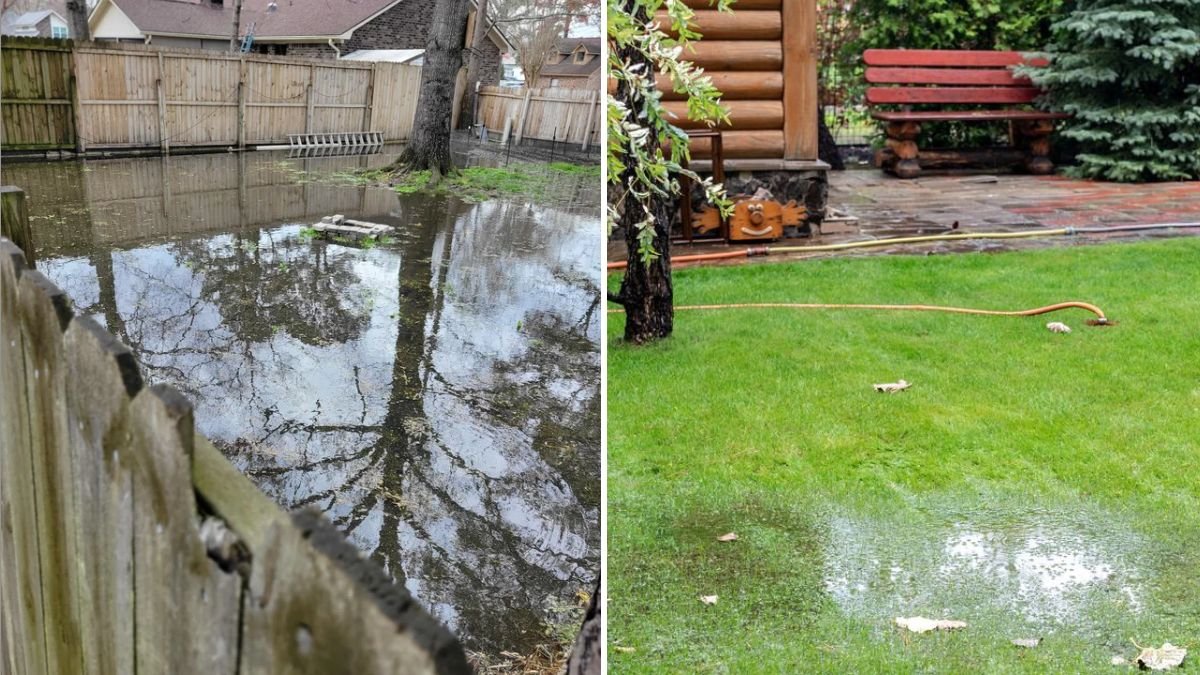Heavy rains can transform a lush green lawn into a soggy, muddy mess. Standing water, compacted soil, and suffocated roots often follow storms, leaving homeowners wondering if their yard will ever recover. The good news is that in most cases, lawns can bounce back with proper care and repair techniques. Addressing flood damage quickly not only restores your lawn’s appearance but also helps prevent long-term issues like fungal diseases, thinning turf, and soil erosion.
This detailed guide covers step-by-step methods to repair a flooded lawn and strategies to protect it from future damage.
Step 1: Assess the Extent of Damage
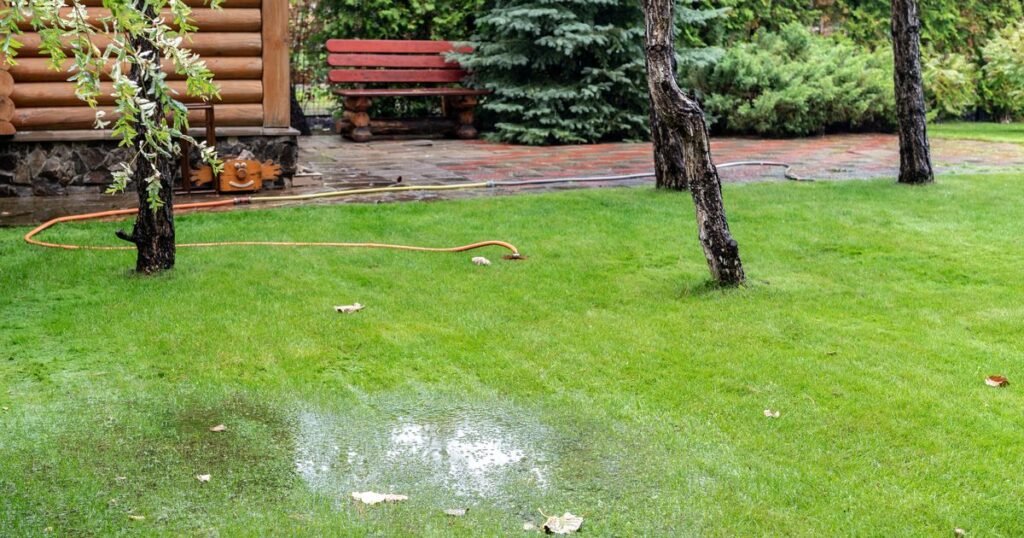
Before grabbing tools, evaluate your lawn:
- Check drainage patterns: Identify low spots where water pools.
- Look for soil compaction: Walking on a soggy lawn often compresses soil, suffocating roots.
- Inspect the grass condition: Some turf may appear yellow or flattened, while severely damaged patches might look brown and slimy.
- Test soil moisture: Push a screwdriver or soil probe into the ground. If it slides in easily and water oozes up, the soil is still saturated.
Pro tip: Don’t start repairing until the lawn dries enough to walk on without sinking. Working on saturated soil causes more compaction and damage.
Step 2: Remove Debris and Silt
Floodwaters often deposit debris, branches, or layers of silt on your lawn:
- Clear debris manually: Use a rake or leaf blower to remove branches, leaves, and trash.
- Thin out thick silt layers: If sediment is more than ½ inch deep, gently rake it away. Thin layers can be left in place and incorporated into the soil.
- Check for erosion: If turf has washed away in spots, note those areas for reseeding later.
Step 3: Aerate the Soil
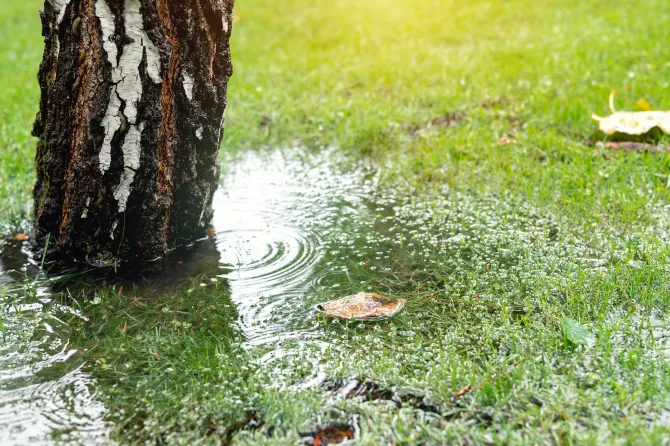
Soil compaction is one of the biggest issues after flooding. Aerating helps oxygen reach roots and allows water to drain more freely.
- Core aeration: Use a lawn aerator (manual or machine) to pull plugs of soil from the lawn.
- For small lawns: A garden fork can be used to poke holes 3–4 inches deep.
- For severely compacted areas: Double-pass aeration may be needed.
This step dramatically improves soil health and encourages turf recovery.
Step 4: Encourage Drying and Drainage
To speed up recovery:
- Spread sand or compost: A light layer of sand, compost, or a topdressing mix improves drainage and soil texture.
- Open drainage channels: If water continues to pool, dig shallow trenches to direct it away.
- Consider French drains or dry wells: For chronic drainage problems, permanent solutions may be necessary.
Step 5: Reseed or Patch Bare Spots
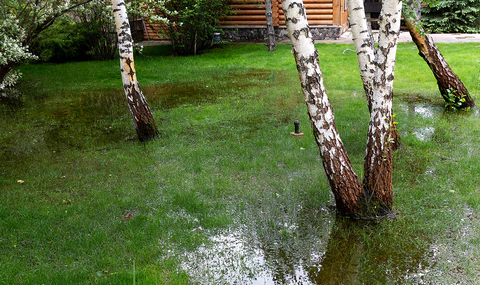
Flooding often kills grass in heavily submerged areas. Once the lawn has dried and soil is aerated, reseed:
- Choose the right seed: Select grass varieties suited for your climate and soil (drought-tolerant in hot regions, moisture-tolerant in rainy zones).
- Prepare soil: Lightly rake the area to loosen soil before spreading seed.
- Apply seed evenly: Cover lightly with straw or mulch to retain moisture.
- Water gently: Keep soil consistently moist until seeds germinate.
For small patches, sod may be a quicker fix.
Step 6: Control Weeds and Prevent Disease
Flooded lawns are prone to weed invasion and fungal outbreaks:
- Watch for fast-growing weeds: Remove by hand or apply an appropriate herbicide once the lawn is stable.
- Apply fungicide if needed: Mushy lawns may develop fungal diseases like brown patch. Treat promptly if symptoms appear.
- Improve airflow: Mow at the correct height and avoid letting grass grow too tall, which traps moisture.
Step 7: Feed and Strengthen the Lawn
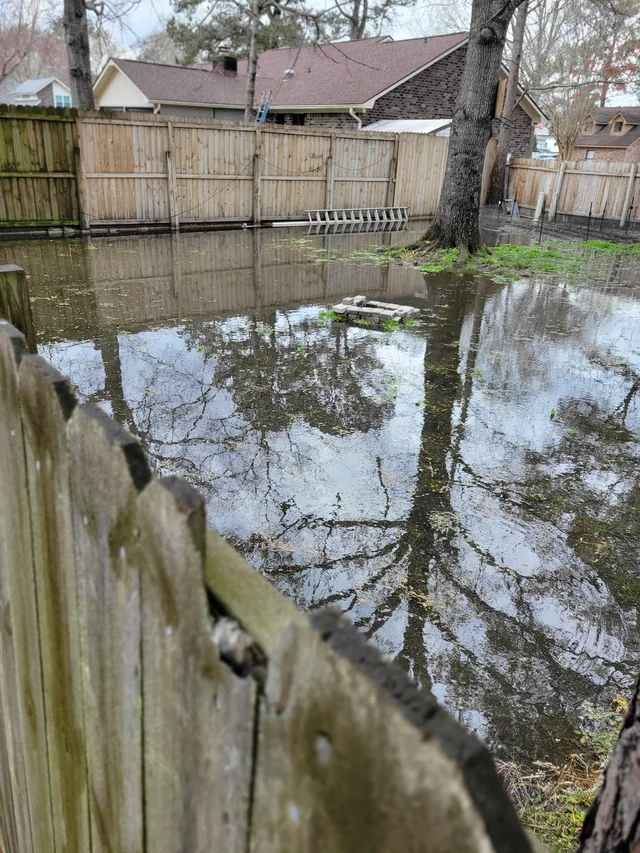
Recovery requires nutrients:
- Fertilize lightly: Apply a balanced, slow-release fertilizer 3–4 weeks after flooding to avoid stressing the grass.
- Topdress with compost: Organic matter improves soil structure and provides nutrients naturally.
- Avoid over-fertilizing: Too much nitrogen encourages weak growth susceptible to disease.
Step 8: Prevent Future Flood Damage
Repairing a lawn is only half the battle. Preventive measures ensure your yard weathers the next heavy rain more effectively:
- Improve grading: Ensure your lawn slopes gently away from your home to prevent pooling.
- Install drainage solutions: French drains, swales, or rain gardens help redirect excess water.
- Plant deep-rooted grasses: Varieties like tall fescue or Bermuda grass withstand wet-dry cycles better.
- Aerate annually: Keep soil loose and well-draining.
- Reduce thatch buildup: Excess thatch acts like a sponge, trapping water at the surface.
Common Mistakes to Avoid
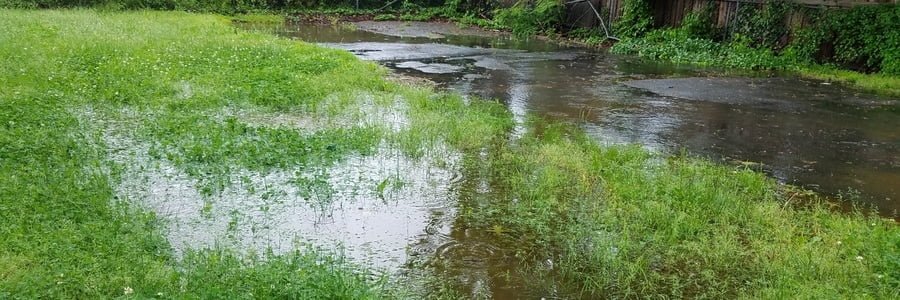
- Walking on saturated lawns: This compacts the soil and makes recovery harder.
- Overwatering after flooding: The soil is already saturated—only water once it dries out.
- Applying too much fertilizer right away: Flood-stressed grass can’t handle high nitrogen levels.
- Ignoring drainage issues: Without addressing the root problem, flooding will continue to damage your lawn.
Final Thoughts
A flooded lawn may look hopeless at first, but with patience and the right approach, it can recover fully. Start with cleanup and aeration, reseed where necessary, and support recovery with proper nutrition and drainage improvements. Most importantly, take preventive steps to protect your yard from future storms.
By following these strategies, you’ll not only repair your flooded lawn but also build a healthier, more resilient landscape ready to withstand whatever weather comes next.
